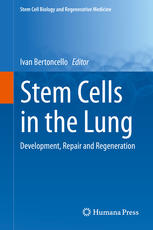

Most ebook files are in PDF format, so you can easily read them using various software such as Foxit Reader or directly on the Google Chrome browser.
Some ebook files are released by publishers in other formats such as .awz, .mobi, .epub, .fb2, etc. You may need to install specific software to read these formats on mobile/PC, such as Calibre.
Please read the tutorial at this link: https://ebookbell.com/faq
We offer FREE conversion to the popular formats you request; however, this may take some time. Therefore, right after payment, please email us, and we will try to provide the service as quickly as possible.
For some exceptional file formats or broken links (if any), please refrain from opening any disputes. Instead, email us first, and we will try to assist within a maximum of 6 hours.
EbookBell Team

0.0
0 reviewsThis book presents a comprehensive overview of the current understanding of the organization of endogenous lung stem and progenitor cell compartments during fetal lung development, postnatal lung growth and in adulthood. Progressing stage by stage, the chapters on fetal lung development emphasize the integrated role of epithelial, stromal, vascular and neural cell elements in building a functional lung, while the subsequent chapters on adult lung regeneration describe the nature and properties of adult lung stem/progenitor cells distributed along the proximal-distal axis of the airway tree. The chapters on regulation of lung regeneration and repair discuss how regenerative cells interact with their niche microenvironment and how regulation of lung regeneration and repair in the steady state and following injury recapitulates ontogeny. And, lastly, the chapters on cellular therapies for lung disease and bioengineering the lung focus on promising emerging therapies and approaches in lung regenerative medicine. The scope of this volume of the Stem Cell Biology and Regenerative Medicine series focuses on exploring the topic of building and rebuilding the lung from a cellular rather than a molecular perspective. Thus, the section on cellular therapies does not include extensive coverage of each of the numerous lung diseases, including cancer, which could be amenable to stem cell-based therapies, although the final chapter does include some discussion on the future prospects and challenges. All of the contributors are working on the cutting edge of the lung stem cell field, making this book essential reading for those with an interest in the field of lung stem cell biology and the potential role of cellular therapies and tissue bioengineering approaches in lung regenerative medicine, including biomedical scientists, graduate students, post-graduate researchers and respiratory clinicians.